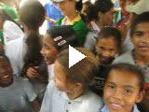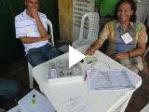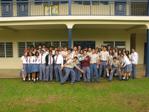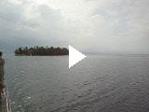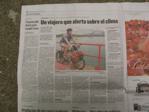Leaving Cartagena, I charted a course south, biking through hot lowlands for a few days before climbing into the Andes and the city of Medellin. My advice was to bike in the daytime (which I do anyway), and stay only in the towns — don’t camp in the country side. I stayed with a family, at two firestations, and a series of cheap hotels ($4 to $7 a night).
The route sees few foreigners, and nearly every person on the roadside asked me ‘¿de donde viene?,’ or where do you come from. They asked in a friendly manner, and I felt obliged to talk to each person (which can be tiring if you are surrounded by children — see video center). In the town of Caucasia, I befriended a man at the municipal building who then invited me to talk at the local school.
The military presence along these roads is impressive. Every few kilometers, there are men in uniform with automatic rifles patrolling the road. I found these men to be friendly, and I felt safe with them on the road. I later learned that although it is generally safe to bike this area, it is ‘paramilitary central,’ and one of my email contacts told me that a mass grave was recently found near one of the cities I stayed in. (The men in uniform on the road were from the army, not the paramilitaries — read more about who the paramilitaries are here).
The last few days of the trip were difficult, including an 8,000 feet climb into the Andes. I was impressed that both in the lowlands and the highlands, the countryside is entirely cleared for cattle grazing.
Biking through the mountains, encountering occasional cold rain, the road eventually descended into the valley where the city of Medellin, Colombia’s second largest city, sits.





